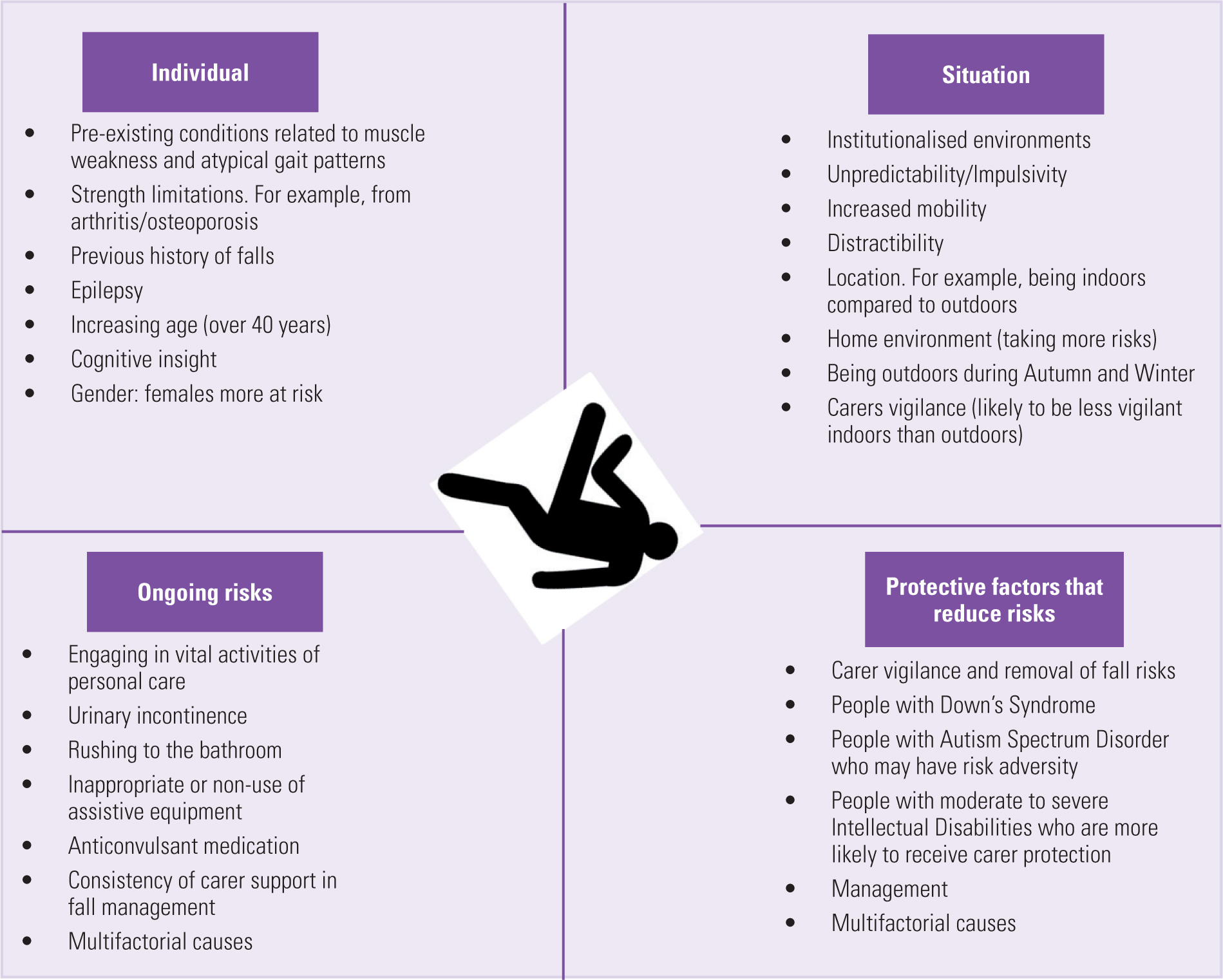The Best Guide To Dementia Fall Risk
The Best Guide To Dementia Fall Risk
Blog Article
The 45-Second Trick For Dementia Fall Risk
Table of ContentsThe Of Dementia Fall RiskFacts About Dementia Fall Risk UncoveredIndicators on Dementia Fall Risk You Should KnowThe Ultimate Guide To Dementia Fall Risk
A fall threat analysis checks to see exactly how likely it is that you will fall. It is mainly provided for older grownups. The evaluation normally includes: This consists of a series of concerns regarding your general health and wellness and if you have actually had previous drops or troubles with balance, standing, and/or walking. These tools evaluate your toughness, equilibrium, and gait (the method you stroll).STEADI includes screening, assessing, and intervention. Treatments are suggestions that might decrease your threat of falling. STEADI consists of 3 actions: you for your risk of falling for your threat variables that can be boosted to try to stop falls (for example, balance problems, impaired vision) to lower your risk of dropping by making use of effective approaches (for instance, supplying education and sources), you may be asked numerous inquiries consisting of: Have you dropped in the past year? Do you really feel unsteady when standing or walking? Are you stressed about dropping?, your copyright will examine your stamina, equilibrium, and stride, utilizing the following fall analysis tools: This examination checks your stride.
Then you'll take a seat again. Your supplier will certainly examine exactly how long it takes you to do this. If it takes you 12 secs or more, it may imply you are at greater danger for a loss. This examination checks toughness and equilibrium. You'll being in a chair with your arms went across over your upper body.
Move one foot midway ahead, so the instep is touching the large toe of your other foot. Move one foot totally in front of the various other, so the toes are touching the heel of your various other foot.
Dementia Fall Risk Things To Know Before You Buy
The majority of falls occur as a result of several adding factors; therefore, taking care of the risk of falling starts with determining the factors that add to fall danger - Dementia Fall Risk. Some of the most relevant threat aspects consist of: Background of previous fallsChronic clinical conditionsAcute illnessImpaired stride and equilibrium, reduced extremity weaknessCognitive impairmentChanges in visionCertain risky drugs and polypharmacyEnvironmental variables can also raise the danger for falls, including: Poor lightingUneven or damaged flooringWet or slippery floorsMissing or damaged hand rails and get hold of barsDamaged or improperly fitted equipment, such as beds, wheelchairs, or walkersImproper usage of assistive devicesInadequate guidance of the people residing in the NF, including those that display aggressive behaviorsA successful fall danger management program needs a complete scientific evaluation, with input from all participants of the interdisciplinary team

The care strategy ought to likewise include interventions that are system-based, such as those that advertise a secure atmosphere (proper lighting, handrails, get bars, etc). The performance of the treatments should be reviewed regularly, and the care plan modified as essential to show changes in the loss danger assessment. Executing a fall danger monitoring system using evidence-based finest technique can lower the frequency of falls in the NF, while limiting the capacity for fall-related injuries.
Dementia Fall Risk Fundamentals Explained
The AGS/BGS standard suggests evaluating all adults aged 65 years and older for fall threat every year. This testing consists of asking clients whether they have actually fallen 2 or even more times in the previous year or looked for medical attention for a loss, or, if they have not fallen, whether they really feel unsteady when walking.
Individuals who have dropped once without injury needs to have their equilibrium and stride reviewed; those with stride or equilibrium irregularities ought to get additional evaluation. A background of 1 autumn without injury and without gait or equilibrium troubles does not require additional analysis beyond continued yearly autumn risk testing. Dementia Fall Risk. A loss threat assessment is needed as part of the Welcome to Medicare exam

Dementia Fall Risk Things To Know Before You Buy
Documenting a falls background is just one of the high quality indicators for fall prevention and monitoring. A vital part of threat assessment is a medication evaluation. Numerous visit the site classes of drugs boost loss risk (Table 2). Psychoactive medications in certain are independent forecasters of falls. These drugs tend to be sedating, change the sensorium, and impair equilibrium and stride.
Postural hypotension can usually be minimized by reducing the dosage of blood pressurelowering medicines and/or stopping drugs that have orthostatic hypotension as a negative effects. Use above-the-knee assistance tube and copulating the head of the bed raised may likewise lower postural reductions in high blood pressure. The preferred aspects of a fall-focused health examination are displayed in Box 1.
-copy-5.jpg)
A pull time higher than or equal to 12 secs recommends high fall danger. The 30-Second Chair Stand examination evaluates reduced extremity strength hop over to here and equilibrium. Being unable to stand up from a chair of knee elevation without using one's arms indicates enhanced loss risk. The 4-Stage Equilibrium test assesses fixed balance by having the patient stand in 4 settings, each considerably a lot more challenging.
Report this page